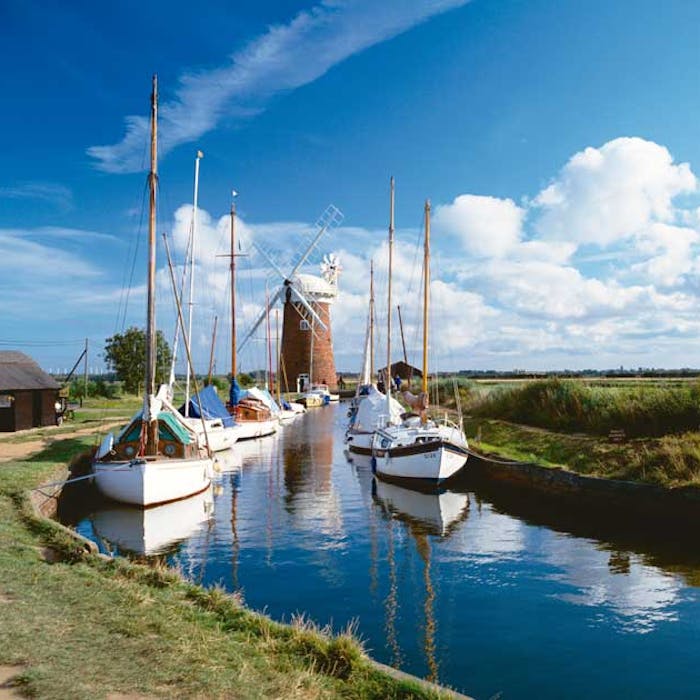
The Norfolk & Suffolk Broads - picturesque waterways
The Norfolk & Suffolk Broads are an area of slow-moving rivers, fens, marshes and waterlogged woodland in the eastern parts of the counties. More than 125 miles of navigable lock-free waterways provide famous boating holiday destination, studded with charming towns and villages.
For many years the lakes (known as broads in the local language) were regarded as natural features of the landscape. It wasn't until the 1960's that botanist and ecologist Dr Joyce Lambert proved them to be artificial features - flooded medieval peat excavations.
In the Middle Ages, fuel supply had been exhausted in the then densely populated area of Norfolk, and a new source was needed. The answer was peat digging - also known as 'turbary'.
Peat extraction was an arduous task, but became a prosperous industry. Digging took place throughout all the east Norfolk settlements until the 14th century. But then the massive holes gradually began filling with water as sea levels rose. Flooding became a regular occurrence, and extraction was no longer possible.
As the holes filled, the navigable Broads provided essential channels for commerce throughout the 16th century. Norwich was then the second largest city in England after London, and its tradable goods of wool, weaving and agricultural produce were exported throughout the world. The waterways were also used to transport coal, bricks, timber and tiles. The boats that plied these routes were then known as Norfolk Wherries, with their single black sail, and smaller, square-sailed keel boats.
The Broads became a boating holiday destination from the late 19th century. In 1878 small yachts were available to hire from John Loynes, and in 1908, Harry Blake created an agency for yachting holidays. The range of boats expanded to include powered cruisers in the 1930s, and the Hoseasons agency was founded soon after the Second World War. By the 1980s the number of cruisers available for hire was 2,400, but had decreased to around 1,700 by 2004. For conservation reasons there is a speed limit enforced on all vessels, to reduce riverbank erosion from waves.
The lock-free nature of the waterways makes them particularly attractive for relaxing holidays. There are five bridges under which only small cruisers and smaller boats can pass. As well as boaters, the area draws all kinds of visitors, including ramblers, artists, anglers, and birdwatchers. There are a number of companies hiring boats for leisure use, including both yachts and motor launches. A great variety of boats can be found on the Broads, from Edwardian trading wherries to state-of-the-art electric or solar-powered boats.
Further reading
Links to external websites are not maintained by Bite Sized Britain. They are provided to give users access to additional information. Bite Sized Britain is not responsible for the content of these external websites.
